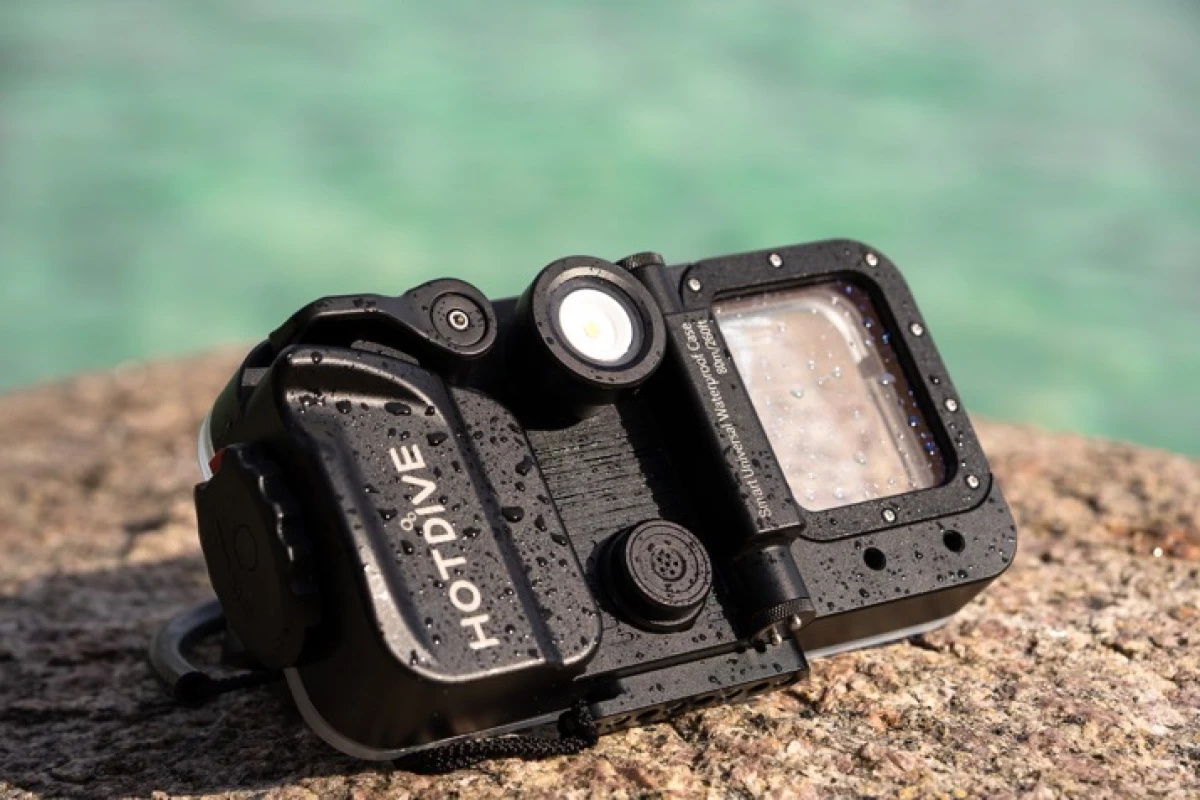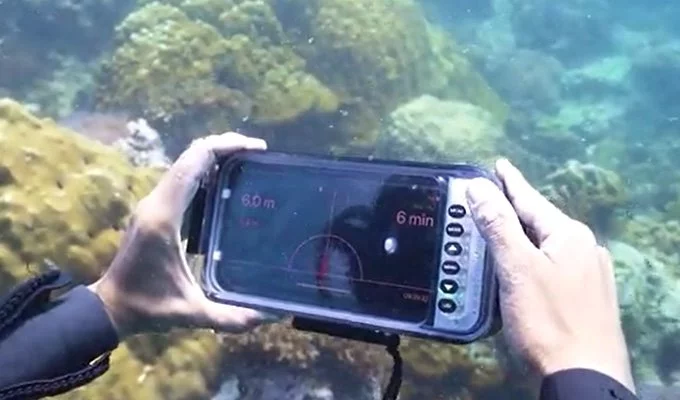There are already devices that allow smartphones to double either as dive computers, or as underwater cameras. The currently crowdfunding HotDive, however, does both.
Constructed from a single piece of aluminum alloy – and 6-mm transparent polycarbonate – the HotDive housing reportedly works with any smartphone no larger than 164 by 84 mm (6.45 by 3.3 in), and is watertight down to a depth of 80 m (262 ft). An integrated pump system creates a vacuum inside, once the housing is sealed up.
The HotDive also features an 800-lumen LED spotlight with a daylight-like color temperature of 5,800 to 6,500 Kelvin; a Swiss TE MS5083 depth sensor; an integrated electronic compass; and a microprocessor.
Data from the latter three items is transmitted via Bluetooth to an iOS/Android app on the smartphone, which allows users to perform functions such as monitoring their current depth, checking their heading, and calculating their ascent time. Both audible and haptic warnings can be programmed to sound when divers reach their maximum desired depth, when they need to start wrapping up the dive, and if they're ascending too quickly.
Additionally, data from each dive automatically gets recorded on a dive log within the app.

Users access the app functions (and switch the spotlight on and off) utilizing a column of pushbuttons on the rear right-hand side of the housing – these buttons are wirelessly linked to the phone. A separate wireless shutter switch is used to snap photos or record videos. The smartphone's camera looks out of a clear panel in front, aided by the light in dim conditions.
And while the phone is powered by its own battery, all of the housing's electronics are powered by an onboard 3,500-mAh lithium battery. One charge should reportedly be good for about 100 minutes of use when utilizing the spotlight, or 15 to 20 days if the light isn't used.
Should you be interested, the HotDive is currently the subject of a Kickstarter campaign. A pledge of US$179 will get you one, when and if they reach production – the planned retail price is $349. The device can be seen in use, in the video below.
Source: Kickstarter





